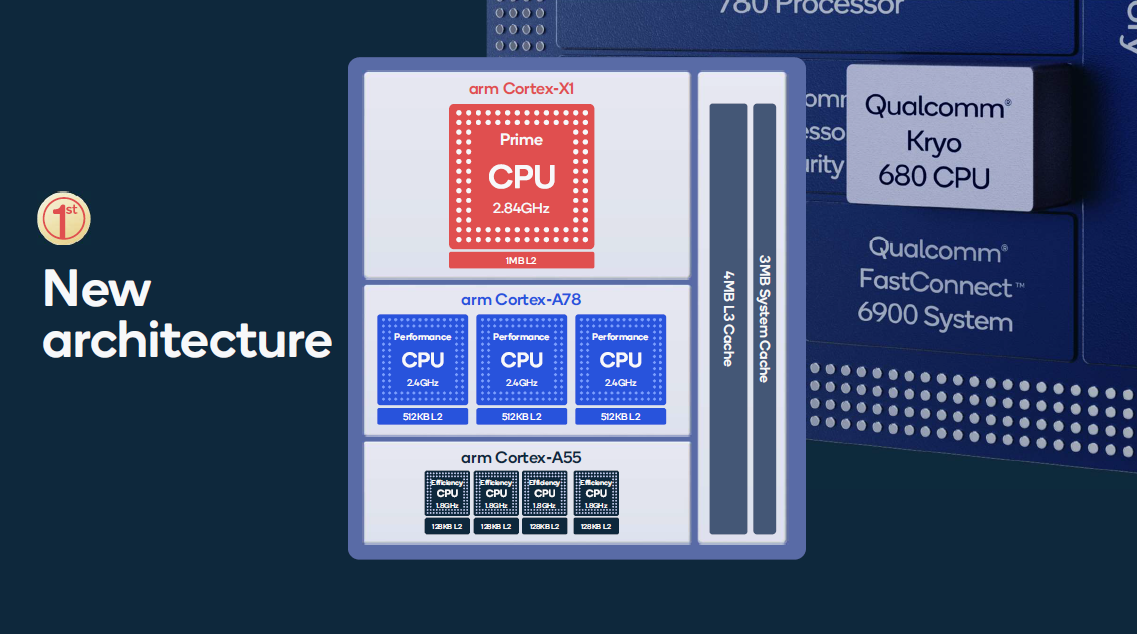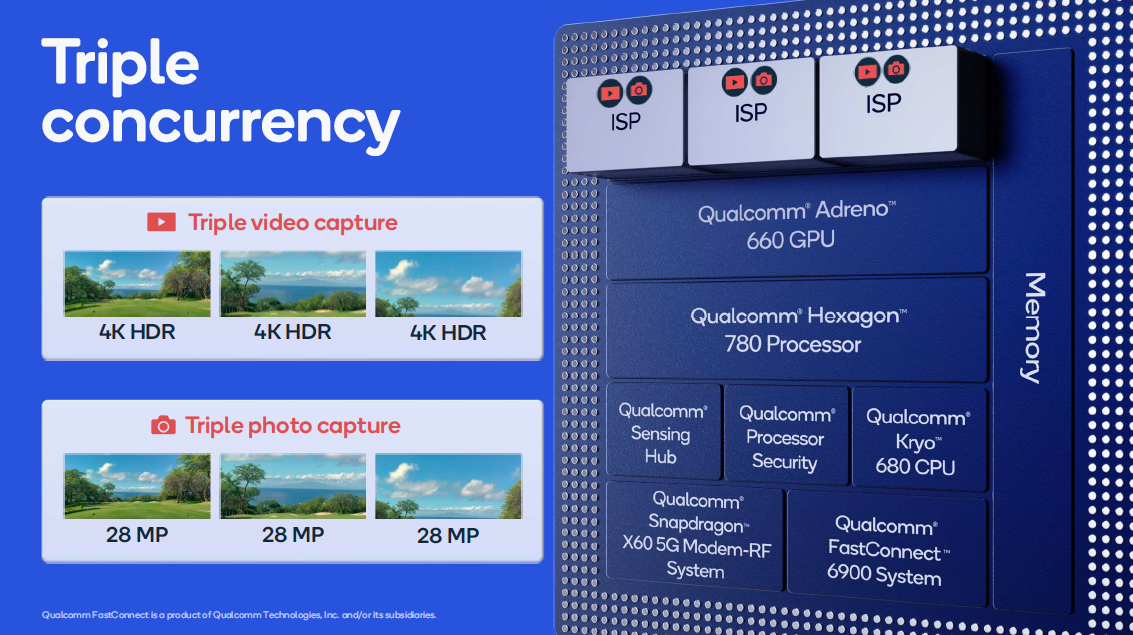In what has become a yearly tradition in early December, Qualcomm has announced its next flagship mobile chip designed for use in high-end phones and tablets. This is the chip that will be found in the biggest phones from Android makers, and plenty of tablets too. So here’s a rundown of all the new specs and features in Qualcomm’s new Snapdragon 888 chip.
To start, like a lot of modern mobile chips, the Snapdragon 888 isn’t just a single processor, it’s a collection of multiple processors crammed together to form what’s called a system on a chip or SoC. So to keep things simple we’re going to break down the Snapdragon 888’s capabilities into a number of smaller categories to get a better idea of what it can do.
Performance and Gaming

Powered by its Kryo 680 CPU and Adreno 660 GPU built using a 5nm process, Qualcomm claims the Snapdragon 888 offers 25% better performance and 25% better power efficiency compared to last year’s Snapdragon 865. One of the big reasons behind the SD888’s increased performance is that this year, Qualcomm has switched over to a new CPU architecture featuring a primary high-performance Arm Cortex-X1 core (which is the first the Cortex X1 has been used in a commercial CPU according to Qualcomm), supplemented by three more Arm Cortex A78 performance cores and four Arm Cortex A55 efficiency cores.
On the GPU side, Qualcomm says the Snapdragon 888’s 35% faster graphics is the biggest improvement generation-over-generation for any of its chips ever. And to help round out its gaming capabilities, Qualcomm has also included its full Snapdragon Elite Gaming suite which includes support for Variable Rate Shading that can improved game rendering speeds by up to 30%, Qualcomm Game Quick Touch which claims to increase touch response speed by up to 20%, and generally wider support for 120fps gameplay.
Cameras
For 2021, Qualcomm is tripling down on the Snapdragon 888 imaging capabilities by including three distinct Spectra 580 image processors, a bump up from the dual ISPs we’ve seen on previous Snapdragon chips. The inclusion of three ISPs is important because Qualcomm says the use of three processors means the Snapdragon 88 can now dedicate an ISP to each of the three rear cameras that have become standard on so many high-end phones — the main cam, the ultra-wide cam, and the telephoto cam — allowing people to capture three photos at up to 28-MP or record three videos at 4K at the same time.
Previously, limits on image processing performance often prevented phones from using all of their cameras at the same time, forcing device makers to create workarounds like snapping pics in quick succession, which sometimes resulting in blurring or reduced image quality. Meanwhile, when it comes to low-light photography, Qualcomm even claims the Snapdragon 888 should capture better-looking photos in dark environments with as little as .1 lux of light. That means nearly no light.

Furthermore, the additional power provided by having three ISP should also allow the Snapdragon 888 to do things like process larger images, record 120 fps photo bursts, and process capture 4K videos with computational HDR to improve things like colour, contrast, and exposure. Finally, another new feature on the Snapdragon 888 is photo capture using 10-bit colour via the HEIF format, which is the same format Apple adopted in 2017 in iOS 11.
Connectivity
With 5G having become such a focus for both phone makers and carriers, there’s no way Qualcomm was going to skimp on the SD 888’s connectivity. So, in addition, to support for Wi-Fi 6 speeds of up to 3.6 Gbps, Bluetooth 5.2, dual Bluetooth antennas, and more, the SD 888 also includes Qualcomm’s new integrated Snapdragon X60 5G MOdem-RF system. This new modem is critical because not only does it support both sub-6 Ghz 5G with carrier aggregation and mmWave 5G with claimed speeds of up to 7.5 Gbps, unlike the modem on the Snapdragon 865, the SD 888’s modem is integrated which should deliver increased 5G power efficiency.
AI and Security
While AI and security might not be the most exciting features on an SoC, they’re still an important part of the mix. On the Snapdragon 888, Qualcomm’s Hexagon 780 processor is said to deliver two times better tensor compute performance, 50% better scalar performance, and improved support for things like natural language processing. Hopefully, this means that even more commands made to AI like the Google Assistant can be processed on device instead of being sent to the cloud, something that could improve privacy and security.
And while it might not quite qualify as traditional AI, Qualcomm’s second-gen Sensing Hub also brings enhanced support for detecting specific events or contextual gestures like earthquakes, car crashes, ambient audio, screen wake and lifting, and more.

As for security itself, the Snapdragon 888 comes with an on-device Qualcomm Secure Processing unit that supports a Type-1 Hypervisor which allows apps to run in a special sandboxed environment to protect against malware or even multiple sandboxed OSes to run at the same time. And in the world filled with Deepfakes and millions of Photoshopped images, Qualcomm says the Snapdragon 888 is the world’s first CAI compliant smartphone camera with Truepic certification, potentially meaning that you’ll have a way of proving your photos are actually legit if you ever find yourself in a situation needing that.
So when it is going to be available?
While Qualcomm hasn’t set a specific date for availability of the Snapdragon 888, Qualcomm expects devices featuring the SD 888 go on sale sometime in Q1 2021 with a number of big name device makers like Oppo and Motorola having already committed to making gadgets with Qualcomm’s new chip. However, one important thing to remember is that while Qualcomm has included a big range of impressive features, ultimately, it’s up to gadgets makers to actually implement those features in final devices.
